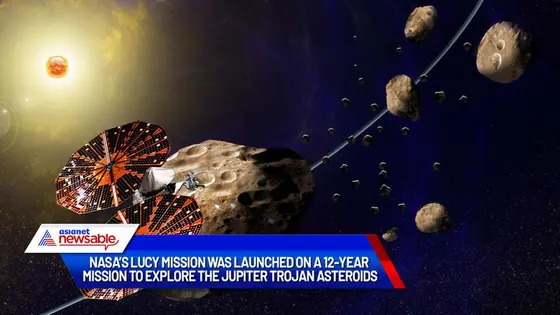
NASA launches 12-year long Lucy mission to explore Jupiter Trojan asteroids
Lucy will embark on a 12-year mission to explore the "fossils of planet formation," Jupiter's Trojan asteroid swarms.
NASA on Saturday launched Lucy mission, a probe toward clusters of asteroids along Jupiter’s orbital path, known as the Jupiter Trojan asteroids, gathering new insights into the solar system's formation. The Atlas V rocket responsible for propelling the probe was scheduled to take off on Saturday at 5:34 am local time (9:34 am GMT) from Cape Canaveral.

Lucy will embark on a 12-year mission to explore the "fossils of planet formation," Jupiter's Trojan asteroid swarms. This mission provides the first opportunity to observe these intriguing objects close-up.
Lucy, named after the fossilized human ancestor, "Lucy," whose skeleton provided unique insight into humanity's evolution – will be the first spacecraft to visit 8 different objects.
The first asteroid that the mission would encounter would be in the main asteroid belt found between Mars and Jupiter, and then it would encounter seven Trojan asteroids. Trojan asteroids are those that share an orbit with a larger planet, which means that they are not a part of the main asteroid belt in the solar system. In our solar system, NASA has reported that Jupiter, Mars and Neptune Trojan asteroids exist, and an Earth Trojan was also reported in 2011.
NASA said during the mission, Lucy would come back to the Earth thrice to take assistance from the planet’s gravitational field, and this would make it the first-ever spacecraft to return to Earth’s vicinity from the outer solar system.